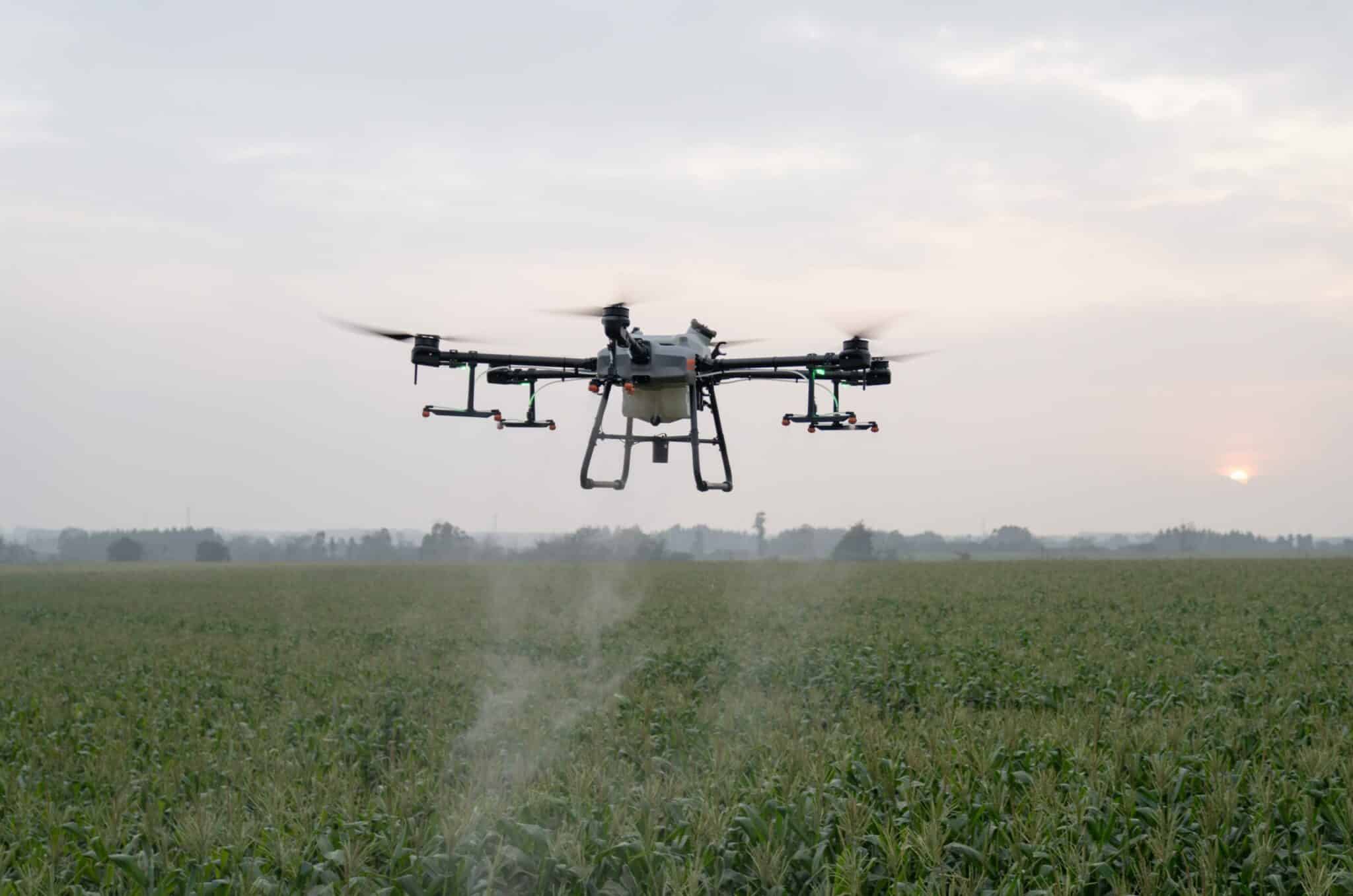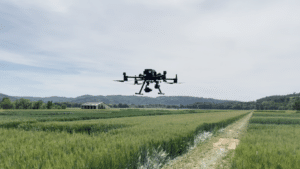From wet-weather spraying to timely scouting, drones are not only proving their efficacy but paving a path for rural entrepreneurship and the next generation on the farm.
Spray drones are alleviating the pain points of crop spray applications, building job opportunities with small, rural businesses, and creating on-farm revenue for the next generation of farmers.
Scouting drones are strengthening relationships and delivering new and on-going management opportunities to farms across the country, taking the tedious and labor-intensive human-element out of crop scouting through advanced imaging.
“Drones help agronomists scout more acres with more detail, more quickly, and with that information they can help farmers make faster, more accurate management decisions,” says Mike DiPaola, chief commercial officer for Taranis, who adds that those timely insights make a real difference in performance profitability.
Since introducing high-resolution scouting as a service in the U.S. in 2020, Westfield, Indiana-based Taranis has helped to build relationships between farmers and their trusted advisors through drone technology.
Using a fleet of DJI Matrice 300 (M300) drones, the retail agronomists Taranis partners with can capture ultra-high-resolution imagery that provides a leaf-level view of any plant in the field. These images are then analyzed by Taranis’ AI platform that leverages machine learning and computer vision to identify actionable insights at scale. These insights not only deliver opportunity for in-season management, but a record of anomaly that a farmer can look back on in future years to assess and make management decisions.
“What happens when you have a picture and an understanding of the threats and the start that each field gets,” DiPaola asks. “Sure, it will make a farm more efficient and treatment more effective, but it’s deeper than that. When you have good information and good content to back it up, it brings people together, and that’s really what makes Taranis unique. We’re creating prosperity.”
The technology only needs the planting date and field boundaries and can collect data on thousands of acres daily. The imagery that is captured is so high-resolution, it can capture insects and insect damage on a single leaf and allow an agronomist to easily distinguish between a crop plant and weed to make better sense of NDVI imaging.
DiPaola says that Taranis delivers value to growers through unbiased, actionable insights, more efficient resource use, healthier crops that provide higher yield potential, and an overall better year-round planning opportunity. And that the artificial intelligence the company has developed is not only industry-leading but the unique piece of the service that truly delivers efficiency and economic benefit to farmers.
“What good are pictures if you can’t do anything with them?” he asks.
“The driving force behind Taranis is the marketplace to train artificial intelligence that was created. We use hundreds of agronomists worldwide to train our artificial intelligence, computer vision, and that means that of these millions of pictures taken over millions of acres, information is tagged and each insight is annotated so I can tell you how many plants are there, which weeds are there, how many plants are in defoliation and what nutrient deficiencies are present, that’s what the artificial intelligence platform does for farmers,” he says. “We have centimeter and sub-millimeter leaf-level capture every time we’re over a field.”
Seeing is Believing
For Concept AgriTek, drones have made all the difference in the sales and agronomy teams’ ability to quickly assess product performance and pinpoint trouble areas in customers’ fields.
As a manufacturer of biological starter and foliar fertilizers, along with micro and macro liquid fertilizers and crop protection, the company is progressive by nature, so equipping every agronomist and sales team member with a drone was a logical step in managing the millions of acres the teams assess.
“When we’re in the field, we’re getting to touch and feel the success of crop that we’ve treated with our products, but it’s different when you go to a farmer and say, ‘Two counties over we’ve done X and seen X’,” says Concept AgriTek President, Daniel Hensley. “That’s why we brought these drones in, so we could fly the fields, get the imagery and show it to our customers, it’s not just our words, the technology is producing this data and it’s hard to argue with something you can see.”
Daniel’s son, Garrett, lent a hand this past summer to implement more drone data collection. During his agronomic research internship with the company, he covered several states and learned first-hand the difference an image can provide.
“Like dad said, seeing is believing for the farmers we’re working with. The NDVI camera that I’m using is able to detect stress, so when I’m looking at our products versus others, I’m able to get a really good visual of crop stress to see which products and product combination are making the biggest difference,” Garrett says.
For the Concept AgriTek team, the next step is looking at implementing spray drones to easily apply more product combinations and formulations at intervals that aren’t dependent on weather or securing an airplane or helicopter.
With new uses for drones being implemented every day, it’s clear that drone technology is just reaching the precipice of functionality on the farm: for farmers, for agriculture and agronomy companies and for technology companies working to make their mark on the industry.
Want to read more on drones? Visit:
Drones are Empowering Farmers Again
Dispelling the Myths About Ag Drone Use
Are Drones Living Up to Their Potential?
How Drone Data Significantly Improves Seed Breeding and Seed Production
As Wildfires Worsen, Native Seed Companies Look Towards New Technology












